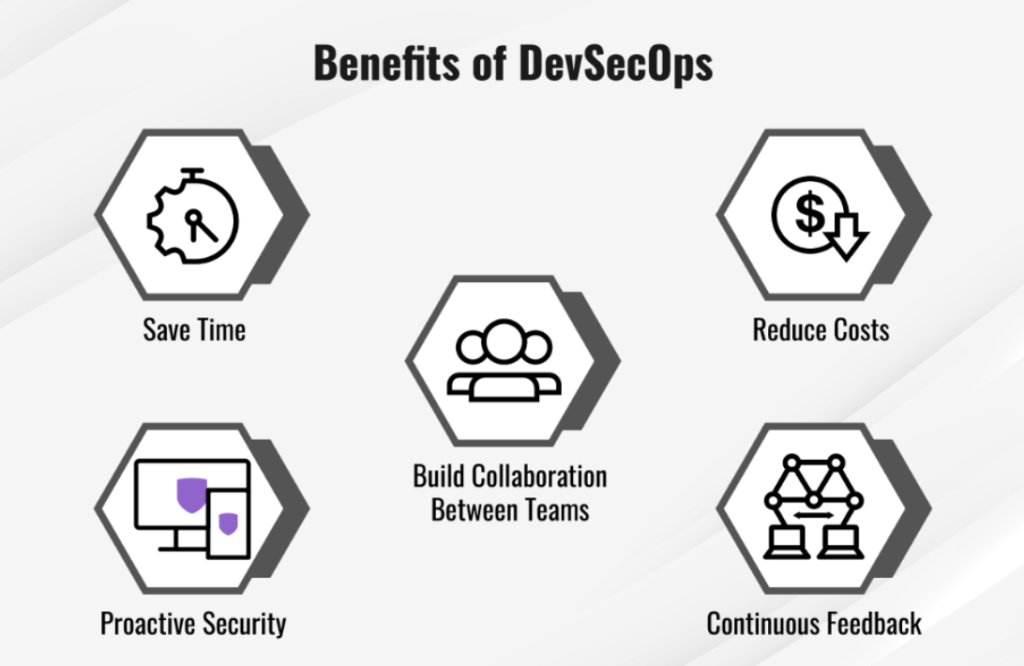Upgrade & Secure Your Future with DevOps, SRE, DevSecOps, MLOps!
We spend hours on Instagram and YouTube and waste money on coffee and fast food, but won’t spend 30 minutes a day learning skills to boost our careers.
Master in DevOps, SRE, DevSecOps & MLOps!
Learn from Guru Rajesh Kumar and double your salary in just one year.

Integrating DevOps practices into cybersecurity, known as DevSecOps, embeds security throughout the software development lifecycle. This approach fosters collaboration among development, operations, and security teams, leading to the creation of robust and secure applications. By incorporating security measures early in the development process, organizations can proactively identify and mitigate vulnerabilities, ensuring that security is a shared responsibility across all stages of software delivery. This integration not only enhances the overall security posture but also streamlines compliance with regulatory standards, resulting in more resilient and trustworthy software solutions.
The Imperative of Integrating Security into DevOps
Traditional software development models often treat security as a separate phase, typically positioned towards the end of the development cycle. This siloed approach frequently led to delayed releases and overlooked vulnerabilities, as security assessments were conducted too late to address foundational issues effectively. In contrast, DevSecOps emphasizes the integration of security from the project’s inception, ensuring that security considerations are integral to every phase of development. This proactive stance is crucial in today’s environment, where cyber threats are increasingly sophisticated and pervasive.

Key Benefits of DevSecOps
- Proactive Vulnerability Management: By embedding security checks throughout the development process, teams can identify and address vulnerabilities before they become critical issues. This proactive approach minimizes the risk of security breaches post-deployment.
- Accelerated Development Cycles: Integrating automated security tools into continuous integration and continuous deployment (CI/CD) pipelines ensures that security assessments don’t bottleneck the development process. This integration allows for rapid and secure software releases.
- Enhanced Collaboration: DevSecOps fosters a culture where development, operations, and security teams work collaboratively. This collaboration ensures that security considerations are integral to every phase of the development lifecycle, promoting shared responsibility.
- Improved Compliance: Continuous monitoring and logging within DevSecOps practices aid in maintaining compliance with industry regulations and standards. Automated compliance checks ensure that applications adhere to necessary security protocols throughout their lifecycle.
- Cost Efficiency: Addressing security issues during the development phase is often more cost-effective than post-deployment remediation. Early detection and resolution of vulnerabilities reduce potential costs associated with security breaches and system downtimes.
Implementing DevSecOps: Best Practices
- Security as Code: Treat security policies and configurations as code, allowing them to be versioned, reviewed, and tested like any other code component. This practice ensures consistency and reduces human error.
- Automated Security Testing: Incorporate automated security tools into CI/CD pipelines to perform static and dynamic analysis, vulnerability scanning, and compliance checks. Automation ensures that security assessments keep pace with rapid development cycles.
- Continuous Monitoring: Implement real-time monitoring and logging to detect and respond to security threats promptly. Continuous monitoring helps maintain a proactive security posture and facilitates quick incident response.
- Collaborative Culture: Promote a culture of shared responsibility where security is everyone’s concern. Encourage open communication and collaboration between development, operations, and security teams.
Challenges in Adopting DevSecOps
Transitioning to a DevSecOps model presents challenges, including:
- Cultural Resistance: Shifting to a culture where security is a shared responsibility may face resistance from teams accustomed to traditional roles.
- Tool Integration: Selecting and integrating the right security tools into existing workflows can be complex and may require significant effort.
- Skill Gaps: Teams may need training to effectively implement and manage security within DevOps practices.
Addressing these challenges requires a strategic approach, including leadership support, continuous education, and the adoption of flexible tools that align with organizational workflows.

 Starting: 1st of Every Month
Starting: 1st of Every Month  +91 8409492687 |
+91 8409492687 |  Contact@DevOpsSchool.com
Contact@DevOpsSchool.com